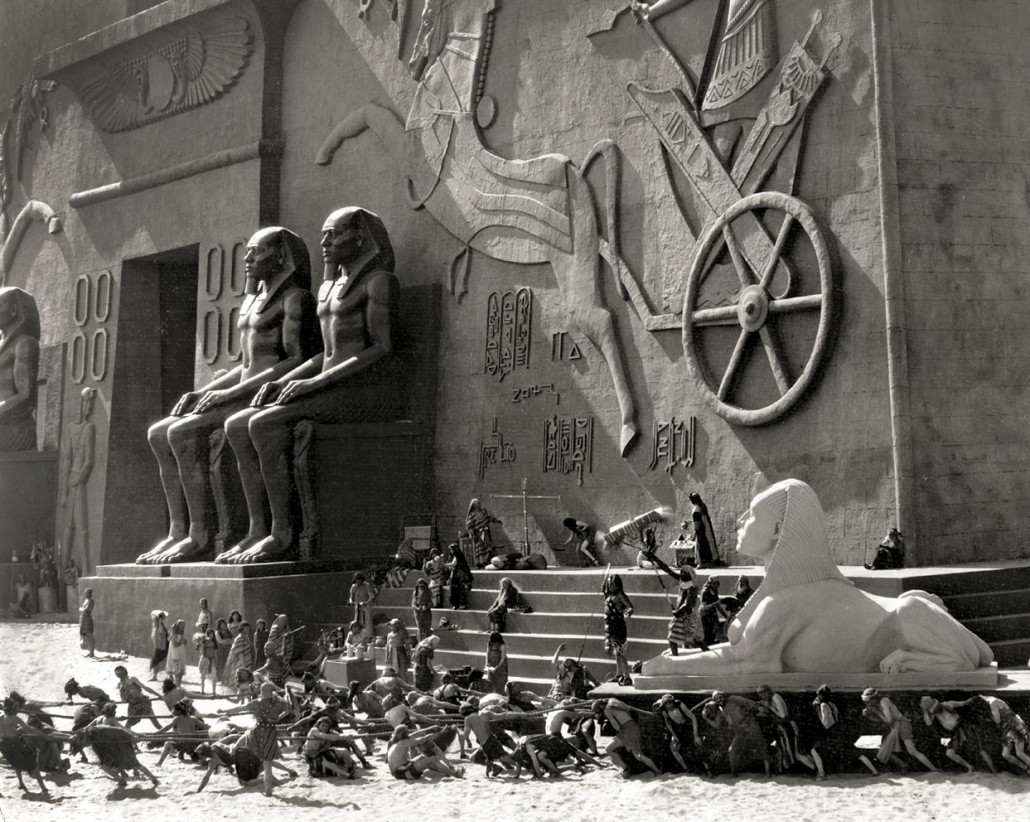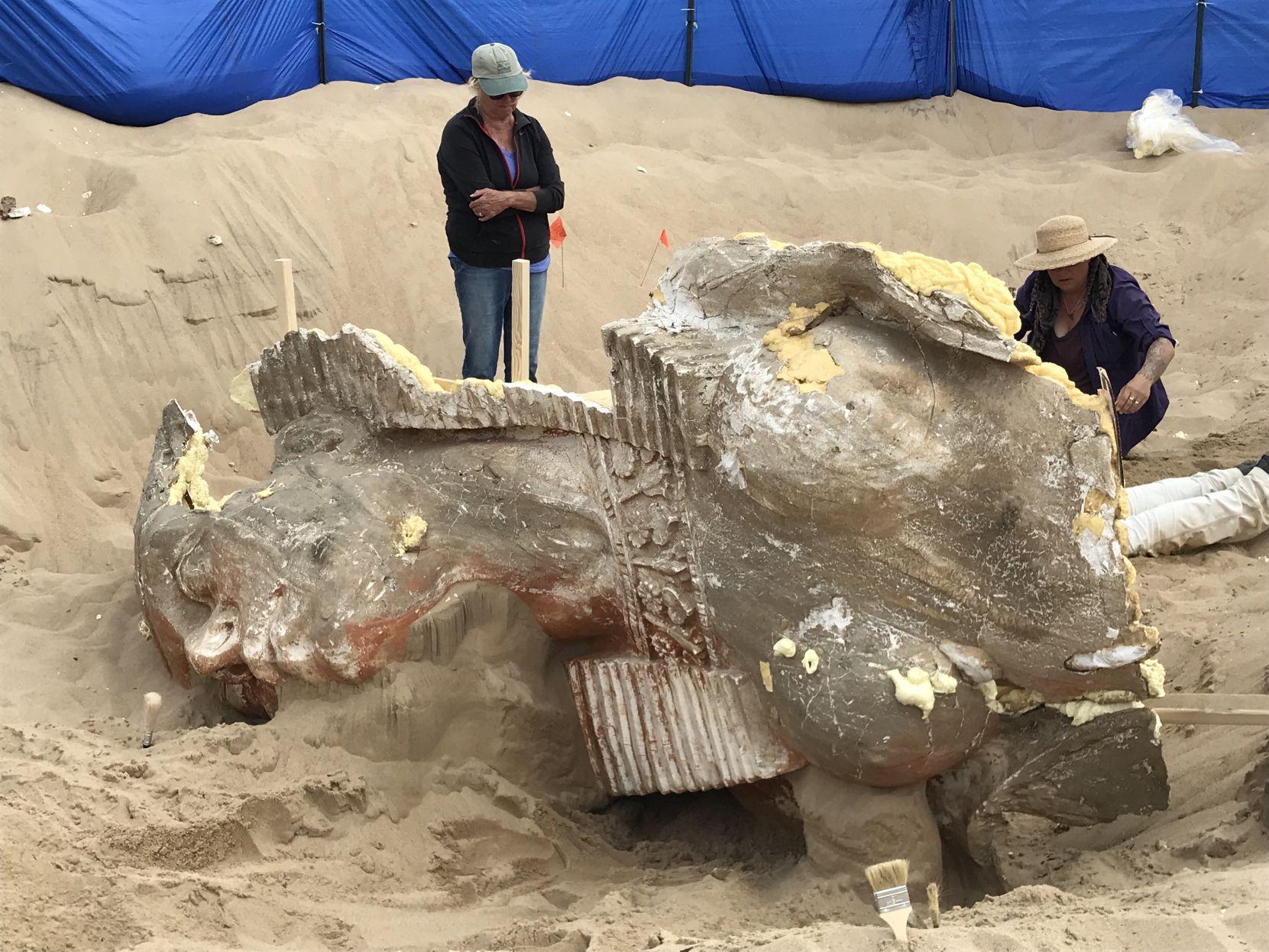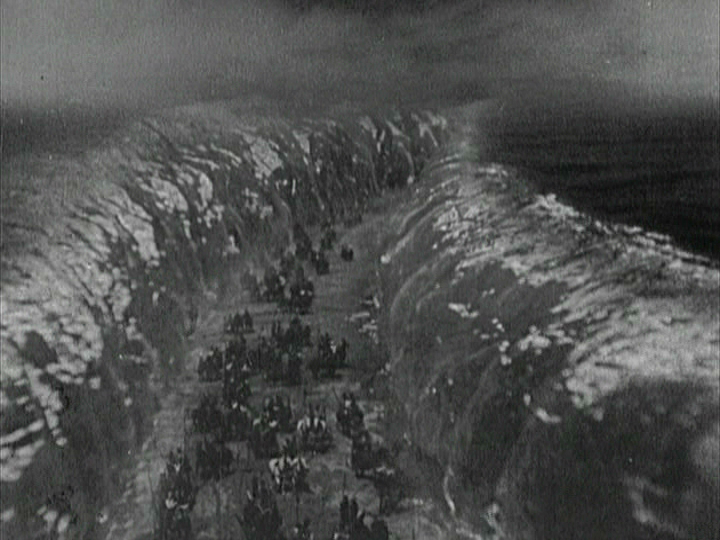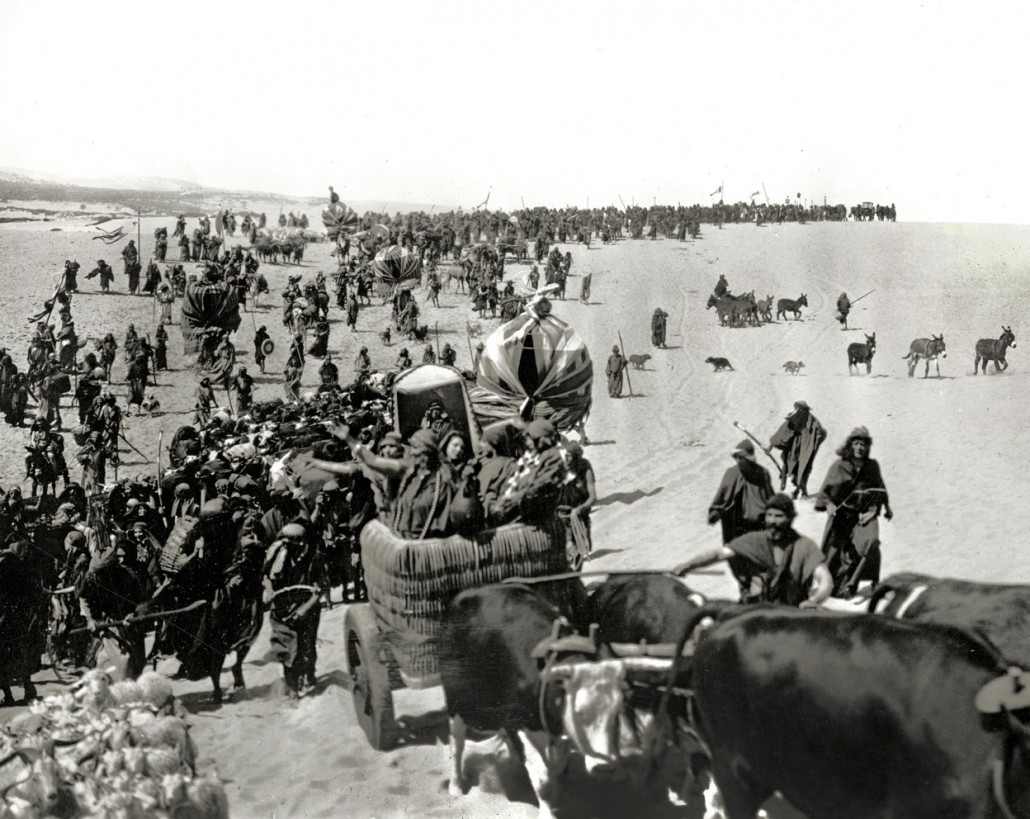Watching old movies is a bit like archaeology: you can study human history via the artifacts, language and sets used at the time. 1923’s “The Ten Commandments” offers a few things to unearth, both on the screen and beneath the sands of a small town in California.
Cecil B. DeMille directed the silent film epic, which was the most expensive movie filmed at the time. The massive sets of ancient Egypt were built on the dunes near the town of Guadalupe, California, about 200 miles north of Los Angeles, and included 12-story high Egyptian temple gates that were 800 feet wide, 35-foot-tall statues, multiple 5-ton Sphinxes, pharaoh statues and a cast and crew of thousands that camped out in a pop-up tent city next to the set.
“The City of the Pharaoh” has been called the largest movie set in history or at least up to that point – and it was the stuff of urban legend for decades. When filming at the dunes ended in summer 1923, the set was either dismantled/burned/picked apart, swallowed up by Mother Nature or deliberately and secretly buried underneath the dune sands, depending on what version of the story you heard. Perhaps a little of all of the above.
The “lost city” remained a mystery for almost 100 years until a filmmaker in the 1980s started digging, figuratively and literally. Some early artifacts were found and gave clues that maybe the set was indeed buried in the sand. (That decades-long journey is told in the documentary “The Lost City of Cecil B DeMille.”) And in 2017, a big moment: a 6-foot-tall sphinx head weighing hundreds of pounds and in great condition was unearthed.
“The piece is unlike anything found on previous digs,” Doug Jenzen, the executive director of the Dunes Center, which now oversees the digs, told reporters in 2017. “The majority of it is preserved by sand with the original paint still intact. This is significant and shows that we’re still learning unexpected facets to historical movie production such as the fact that objects in black and white films were actually painted extremely intense colors.”
“DeMille’s lost city” is now a registered archaeological site, overseen by the Dunes Center, part of the Guadalupe-Nipomo Dunes Complex, which includes a wildlife refuge.
The Dunes Center museum includes exhibits on the 1923 production and displays of what’s been found including pieces of costumes, some of the temple exterior that show hieroglyphics and artifacts of daily life on a film set including glass bottles and shovels.
What’s been found so far seems to confirm the theory that DeMille didn’t destroy the set and instead left it intact, with the dune’s sands swallowing it up over a short time.
“What we’re finding is everything is pretty much exactly where it was when it was filmed,” Jenzen told the Santa Maria Sun in 2016. “The sphinxes are in the same direction and the same places they were in the film. Plus, a lot of the statuary is in really good shape.”
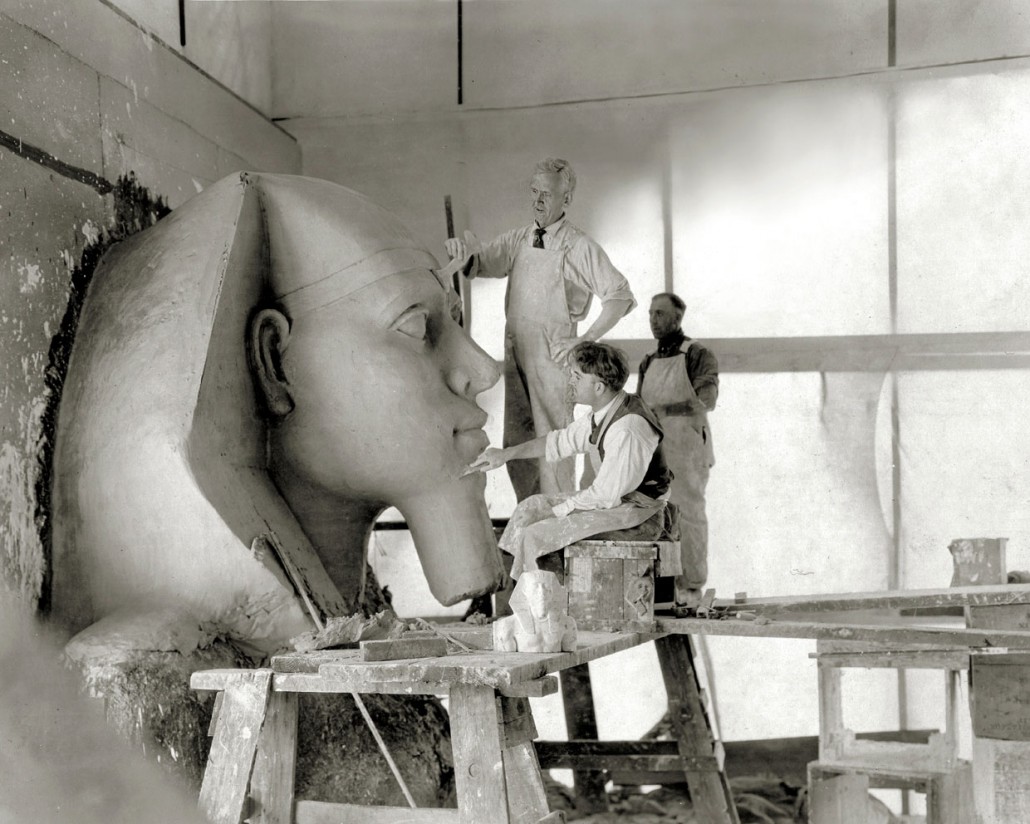 |
| "Egyptian structures" used in 1923's "The Ten Commandments," from top: found buried in the dunes, in the silent movie and in the Paramount workshop |
On screen findings
On screen and out of the sand, the 1923 movie’s plot is divided into two parts: Part one is the traditional Biblical tale of Moses: the Exodus from Egypt, the parting of the Red Sea, receiving the Ten Commandments. Part two takes place in then-contemporary 1920s times: a tale of two brothers, one who basically breaks every commandment as a cheating building contractor and the other who doesn’t.
Part one, roughly the first 50 minutes, is worth watching for the brisk pace, the spectacular special effects (early Technicolor scenes, Jell-O for the parting of the sea) and the SCALE of the movie-making – no CGI back then!
The latter half, set in “modern” 1920s, is interesting as an insight and commentary on how the Jazz Age viewed itself and its changing morals at the time, especially by the middle-class culture. To be honest, the second half plods a bit and I tend to watch it at 2x speed.
The 1923 movie also unearths another facet of culture at the time: the explosion of interest in all things ancient Egypt. King Tut’s tomb had been found in 1922, and Egyptian influences could be seen in everyday design and art. The Egyptian set of “The Ten Commandments” was designed by the “father of Art Deco” himself Paul Iribe.
The movie is also coming at the heels of the end of World War I, the ripples of which were still being felt across the world and society. In its intro title card, “The Ten Commandments” taps into this: “... Then, through the laughter, came the shuttering thunder of the World War. And now a blood-drenched, bitter world – no longer laughing – cries for a way out.”
DeMille also directed the 1956 Charlton Heston remake, but the term “remake” here is used loosely. Instead of two parts, DeMille goes deep on the Biblical plot aspects and expands the life story of Moses (Heston) for the entire movie. No contemporary lens is added. Maybe that’s why this version has retained its prominence. That and its annual airing since the 1970s at Easter on the American ABC TV network.
But in 1923, this black-and-white silent version was king. It was the top box office draw of the year, depending on which estimate you use, but it was certainly one of the biggest money-makers of the entire decade.
1923’s “The Ten Commandments” would end up being the first of DeMille’s Biblical “trilogy” with “The King of Kings” in 1927 and followed by “The Sign of the Cross” in 1932.
Watch the full movie on YouTube
